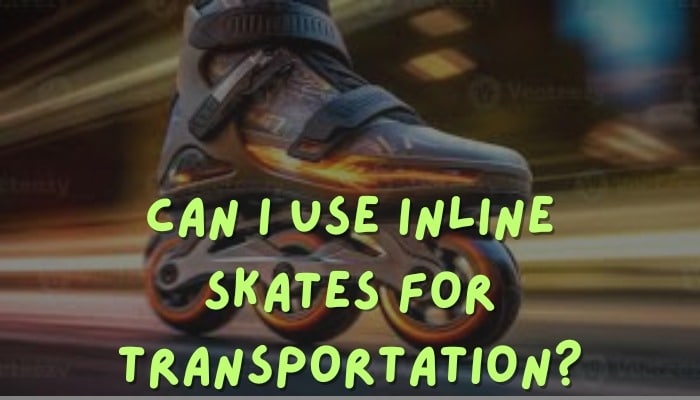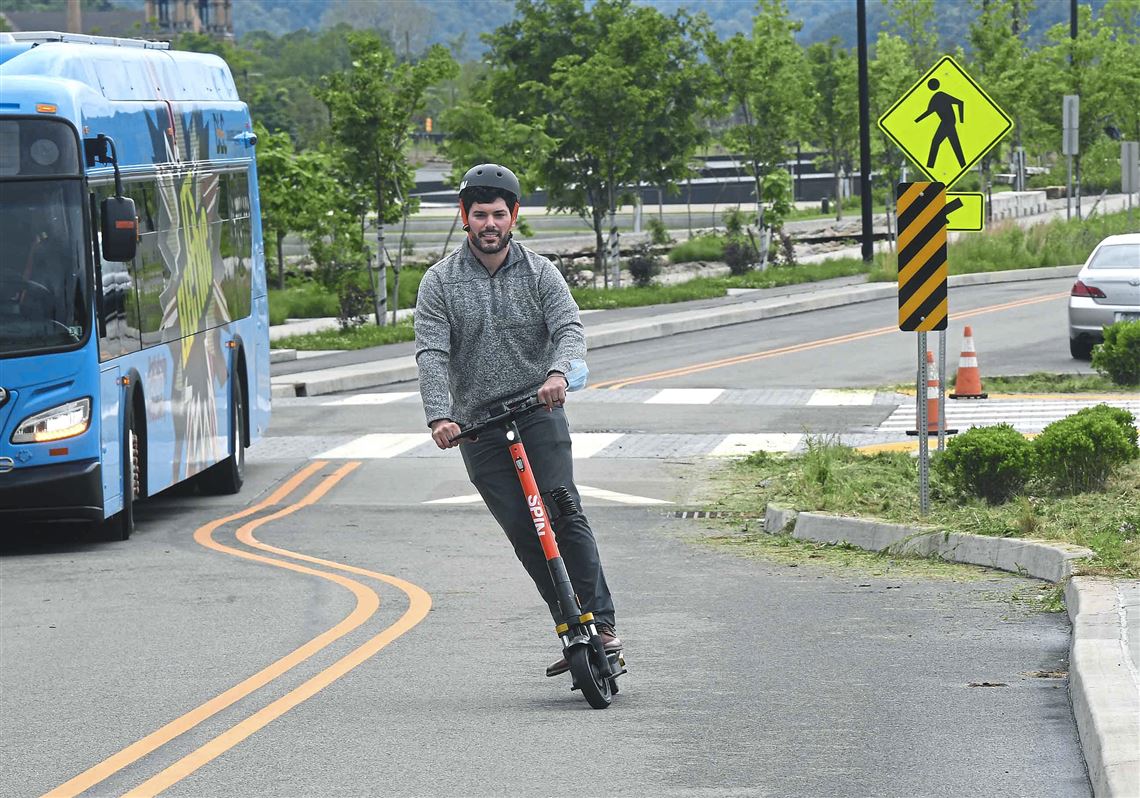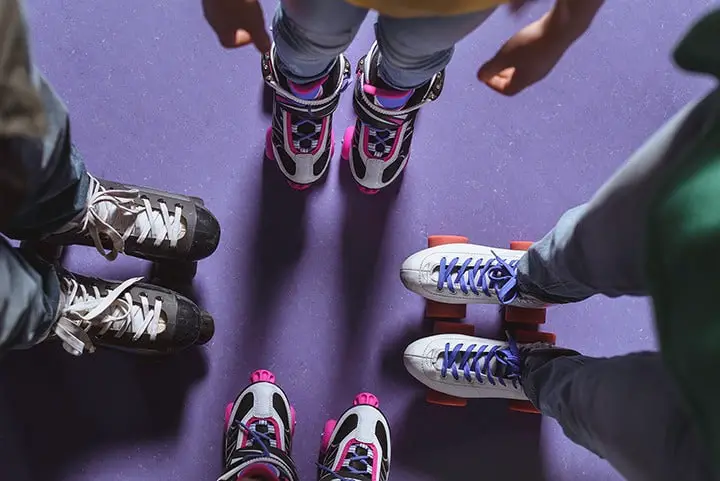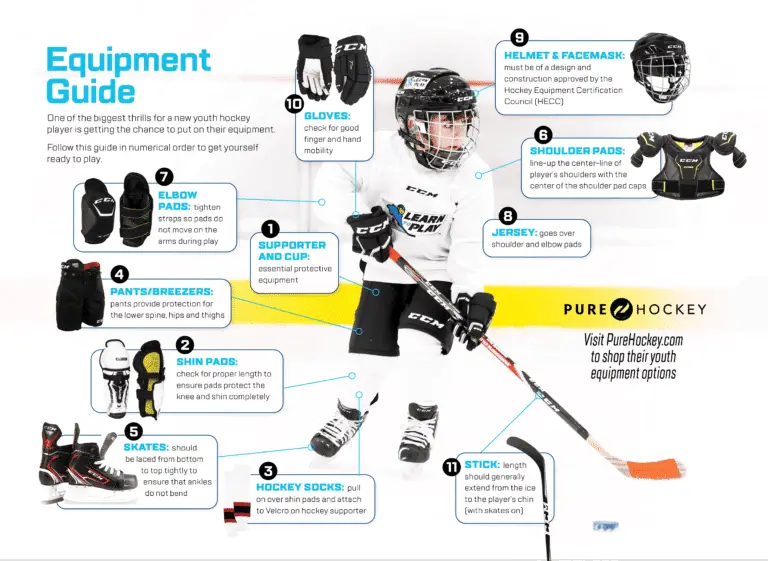Can I Use Inline Skates for Transportation? Discover the Power and Efficiency!
( If you purchase through our sponsored links, we may receive a small commission at no extra cost to you )

Inline skates can be used for transportation, making them a convenient option for getting around efficiently. They offer a faster mode of travel compared to walking, allowing you to cover more distance in less time.
Additionally, inline skates provide a fun and enjoyable way to commute while also engaging in physical activity. With proper safety measures and practice, they can be a suitable choice for short to medium-distance travel. So, if you’re looking for an alternative mode of transportation that’s both practical and enjoyable, inline skates can be a great option.
Credit: www.post-gazette.com
Benefits Of Using Inline Skates For Transportation
Inline skating, also known as rollerblading, is not just a recreational activity but also an efficient means of transportation. More and more people are discovering the benefits of ditching their traditional modes of transportation and opting for inline skates. In this article, we will explore the various advantages of using inline skates for transportation that makes it a viable alternative to getting around town.
Increased Speed
One of the major benefits of using inline skates for transportation is the increased speed it offers compared to walking or even cycling in some instances. With inline skates, you can glide effortlessly along the pavement, covering larger distances in a shorter amount of time. Whether you’re commuting to work, running errands, or simply exploring your surroundings, the speed advantage of inline skates can save you valuable time and make your journeys more efficient.
Improved Fitness
Inline skating provides an excellent full-body workout, making it a great option for transportation with added health benefits. Skating engages various muscle groups, including your legs, core, and even your upper body as you maintain balance and propel forward. Regular inline skating not only helps you burn calories and strengthen your muscles but also improves cardiovascular health and endurance. By incorporating inline skating into your daily commute, you can effortlessly stay active and improve your fitness level without the need for a separate workout routine.
Eco-friendly
With growing concerns about our impact on the environment, it’s important to consider eco-friendly transportation options. Inline skating is a sustainable mode of transport that produces zero emissions, making it an environmentally friendly choice. By opting for inline skates, you reduce your carbon footprint, contribute to cleaner air quality, and promote a greener future. Additionally, there is no need for fuel consumption or maintenance costs associated with other forms of transportation, making inline skating a cost-effective and eco-conscious choice for getting around.
So, if you’ve been contemplating whether inline skates can be a feasible form of transportation, rest assured that they offer several benefits that go beyond just recreational enjoyment. The increased speed, improved fitness, and eco-friendly nature of inline skating make it a versatile and practical option for your daily commute or any other travel needs. Additionally, inline skating allows you to enjoy the outdoors, soak in the fresh air, and experience a unique sense of freedom that traditional transportation methods may not provide. Give inline skating a try and enjoy the perks it brings to your daily life!

Credit: www.amazon.com
Factors To Consider
Inline skates can be a viable mode of transportation, but several factors should be considered. Factors such as safety measures, road conditions, and distance should be evaluated before using inline skates for commuting purposes.
Factors to Consider
When considering the use of inline skates for transportation, there are several factors that you should take into account. These factors can greatly impact your overall experience and safety while using inline skates for travel. In this section, we will discuss three key factors to consider: surface conditions, safety gear, and distance of travel.
Surface Conditions
The condition of the surface you will be skating on is an important consideration when using inline skates for transportation. Uneven or rough surfaces can make it difficult to maintain balance and control, increasing the risk of accidents. Smooth, well-maintained surfaces like bike paths, sidewalks, or designated skate lanes are ideal for inline skating as they provide a smooth and predictable surface.
However, it is important to note that not all surfaces are suitable for inline skating. Avoid surfaces with loose gravel, potholes, or cracks as they can pose a significant hazard. It is crucial to assess the surface conditions and choose a route that minimizes the risk of injury.
Safety Gear
Safety should always be your top priority when using inline skates for transportation. Wearing proper safety gear can greatly reduce the risk of injury in case of falls or collisions. Essential safety gear includes a helmet, wrist guards, knee pads, and elbow pads. These protective gears protect your head and vulnerable joints from potential injuries.
Investing in high-quality safety gear is crucial to ensure optimal protection. Look for gear that is specifically designed for inline skating or rollerblading, as they offer better protection and durability. Remember, safety should never be compromised when using inline skates for transportation.
Distance Of Travel
The distance you plan to travel on inline skates is another important factor to consider. Inline skates are ideal for short to medium distances, such as commuting from home to work, running errands, or leisurely cruising around the neighborhood. For longer distances, such as cross-city travel or extended trips, alternative modes of transportation may be more practical.
It’s important to assess your stamina, fitness level, and skating technique when considering the distance of travel. If you are a beginner or have limited endurance, start with shorter distances to build up your skills and confidence. Additionally, consider the availability of rest stops or public transportation options along your route for longer trips.
Considering these factors will help you determine whether inline skates are suitable for your transportation needs. By evaluating the surface conditions, ensuring proper safety gear, and considering the distance of travel, you can make an informed decision that prioritizes safety and convenience. So lace up your skates, make the necessary preparations, and enjoy the exhilarating experience of using inline skates for transportation.

Tips For Using Inline Skates For Transportation
Inline skates are not just for recreational activities, they can also be a great mode of transportation. Whether you want to cruise around the city or commute to work, inline skates can provide a fun and efficient way to get around. If you’re new to using inline skates for transportation, here are a few tips to help you get started and make the most out of your rides.
Choosing The Right Skates
When it comes to using inline skates for transportation, it’s essential to choose the right pair to ensure comfort and control during your rides. Consider the following factors when selecting your skates:
- Fit: Make sure the skates fit your feet snugly but not too tight. Proper fit will enhance your overall skating experience and prevent discomfort.
- Wheel Size: Opt for larger wheels as they provide better stability and smoother rides on different surfaces, such as pavements or roads.
- Braking System: Look for skates equipped with a reliable braking system, like a heel brake, to ensure you can stop safely when needed.
- Ankle Support: Choose skates with adequate ankle support to help prevent injuries and maintain stability while skating.
Practicing Balance And Control
Before venturing out onto busy streets, it’s crucial to spend some time practicing your balance and control on your inline skates. Here are a few exercises to help you improve:
- Staggered Stance: Stand with one foot slightly in front of the other, knees slightly bent. Practice shifting your weight from one foot to the other while maintaining your balance.
- One-Legged Balance: Lift one foot off the ground and practice balancing on a single leg. This exercise will help strengthen your core and improve your stability.
- Turning and Cornering: Find an open space and practice making turns and corners smoothly. Focus on bending your knees and using your body weight to initiate and control the turns.
Planning Your Routes
When using inline skates for transportation, it’s essential to plan your routes carefully to ensure smooth and safe rides. Consider the following factors while planning your routes:
- Surface Conditions: Avoid uneven or rough surfaces that can make skating more challenging and increase the risk of accidents. Opt for well-paved paths or dedicated bike lanes for a smoother ride.
- Traffic and Pedestrian Flow: Choose routes with lower traffic volume and minimal pedestrian activity whenever possible. This will allow you to skate more comfortably and safely.
- Proximity to Facilities: Consider the availability of water, restrooms, and other facilities along your planned routes, especially for longer rides. This will ensure you can take necessary breaks and stay hydrated.

Credit: bladeville.com
Frequently Asked Questions Of Can I Use Inline Skates For Transportation?
Can You Travel With Rollerblades?
Yes, you can travel with rollerblades. They are lightweight and easily portable for transportation purposes.
How Do You Transport Inline Skates?
Inline skates can be transported by using a bag or a backpack specifically designed for skates. Make sure to remove the wheels and use blade guards to protect them. Additionally, securely fasten the backpack or bag to prevent any damage during transport.
Can I Wear Skates On The Bus?
No, wearing skates on the bus is not allowed. Skates may pose a safety hazard to yourself and others in a confined space. It’s important to consider the comfort and safety of everyone during your bus ride.
Do Roller Skates Count As A Vehicle?
No, roller skates do not count as a vehicle. They are recreational equipment used for skating and not classified as a means of transportation.
Conclusion
Inline skates can indeed be a practical option for transportation. With their speed, maneuverability, and compact size, they offer a convenient and efficient way to get from one place to another. Whether you’re commuting to work, running errands, or exploring your city, inline skates can be a fun and eco-friendly alternative to traditional modes of transportation.
So next time you’re considering how to get around, don’t overlook the benefits of inline skates. Lace up and move freely through the streets!





